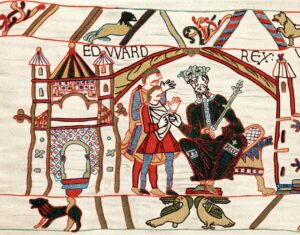‘Peanuts’ turns 70 this month, but the origins of narrative art go back to ancient Sumeria more than 4,000 years ago.
October 8, 2020
Good grief! It’s Snoopy’s 70th birthday. Charles M. Schulz’s ‘Peanuts’ comic strip made its debut on Oct. 2, 1950, and though it ended with Schulz’s death in 2000, Snoopy, Charlie Brown, Lucy and their friends are still beloved today. Their longevity is a testament to the power of the comic strip—a form of storytelling that has been around for thousands of years.
The Sumerians were the first to integrate words and pictures to tell an individual’s story. The earliest example is the Stele of the Vultures, created around 2450 B.C., which depicts King Eannatum of Lagash’s crushing victory over the kingdom of Umma. The form, known as narrative sequential art, spread across the ancient world, reaching its apogee under the Roman emperor Trajan. A 126-foot high column in Rome, completed in 113 A.D., recounts his successful campaign against the Dacians in 155 intricately carved scenes.

A detail from the Bayeux Tapestry.
PHOTO: PRINT COLLECTOR/GETTY IMAGES
Rather more humbly, though no less eloquently, a 1st-century tomb depicts the founding of the Roman city Capitolias, in what is now Jordan, through a series of wall paintings. One scene shows a stonemason at work. In the equivalent of a speech bubble, he says “I am cutting stone.” Another figure says, “Alas for me! I am dead!”
Narrative sequential art developed independently in Asia as well as pre-Columbian America. Buildings in the Mayan city of Yaxchilan, now in Mexico, had carved stone lintels depicting scenes that associated the monarchy with divine rule. Lintel 24, made around 725 and now in the British Museum, shows King Shield Jaguar II and his wife Lady K’abal Xook undergoing painful blood rituals to prove their fitness to rule. Lady Xook pulls a thorn-encrusted rope through her tongue.
Royal and religious purposes were also served by the Bayeux Tapestry, made in the 11th century, which depicts the events leading up to the Norman conquest of England in 1066. Its original audience would have understood its more than 70 scenes as a drawn-out morality tale about the consequences of sin: England was invaded because King Harold broke his oath of loyalty to the Normans.
In the age of print, graphic narratives could reach much wider audiences. The English artist William Hogarth managed to make sin look sexy in “The Rake’s Progress,” a series of eight paintings that were turned into popular engravings in 1735.
But the comic strip as we know it today was invented in the 1830s, almost by chance, by the Swiss artist and caricaturist Rodolphe Topffer. The comical cartoon sequences he drew for his friends attracted the admiration of Goethe, becoming so popular that publication was inevitable. His “Histoire de M. Vieux Bois” inspired hundreds of American imitators when it was published in the U.S. in 1842 as “The Adventures of Obadiah Oldbuck.”
The real golden age of American comic strips began in 1929, with Hal Foster’s adaptation of Tarzan into a continuous-action adventure strip. Marvel and DC Comics later turned Foster’s genius into a lucrative formula. Nearly a century later, the genre is still reaching new heights: In 2016, the late Congressman John Lewis’s memoir “March: Book Three” became the first graphic novel to win a National Book award.





